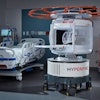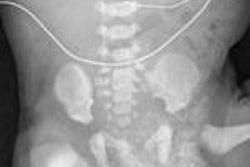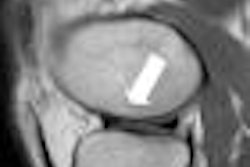U.S. researchers used a structural MRI brain mapping technique to assist physicians in making a clinical diagnosis of three common neurodegenerative disorders, according to a presentation at last week's Alzheimer's Association International Conference on Alzheimer's Disease (ICAD) in Vienna, Austria.
The diseases -- Alzheimer's disease, frontotemporal lobar degeneration, and Lewy body disease -- can be difficult to diagnose, with specific diagnosis often available only at autopsy.
Prashanthi Vemuri, Ph.D., a senior research fellow in radiology at the Mayo Clinic in Rochester, MN, said that MRI can be used to develop a brain atrophy map, called Structural Abnormality Index, or STAND-Map, that shows promise in accurately diagnosing dementia patients while they are alive.
For the study, all of the 90 dementia patients from the Mayo Clinic database were confirmed to have a single dementia pathology, and they also received an MRI at the time of clinical diagnosis of dementia. Using the STAND-Map framework, researchers predicted an accurate pathological diagnosis 75% to 80% of the time.
The researchers were able to diagnose Alzheimer's disease 81.3% of the time, frontotemporal lobar degeneration 90% of the time, and Lewy body disease 88.8% of the time.
Atrophy maps can be created on standard MRI scanners, Vemuri said at her poster presentation at the ICAD meeting. The maps show a pattern of brain activity that appears to be specific for each of the diseases. The rationale is that if each neurodegenerative disorder can be associated with a unique pattern of atrophy specific on MRI, it may be possible to differentially diagnose new patients.
Vemuri said that dementia specialists at tertiary facilities such as Mayo probably can differentiate the diseases without the help of STAND-Map. She believes the major impact of her work would be in allowing doctors at community hospitals and clinics to better diagnose their dementia patients.
"We envision the greatest clinical value of [STAND-Maps] to be in subjects who have dementia that is difficult to classify, mixed dementia pathologies, mildly symptomatic subjects early in the disease process who have not yet presented the full syndrome complex, clinically atypical diagnosis, and in situations where highly skilled clinical experts are not available," Vemuri said.
"The next step would be to test the framework on a larger population to see if we can replicate these results and improve the accuracy level we achieved in this proof-of-concept study," she added. "In turn, this may lead to better treatment options for dementia patients," she said.
By Edward Susman
AuntMinnie.com contributing writer
July 20, 2009
Related Reading
MRI, PiB-PET may help distinguish dementias, May 4, 2009
Brain scans spot changes linked to Alzheimer's, March 17, 2009
MRI shows brain atrophy to predict Alzheimer's, February 11, 2009
MRIs show promise for early Alzheimer's diagnosis, July 28, 2008
Functional MRI may detect early Alzheimer's disease, September 25, 2007
Copyright © 2009 AuntMinnie.com



.fFmgij6Hin.png?auto=compress%2Cformat&fit=crop&h=100&q=70&w=100)




.fFmgij6Hin.png?auto=compress%2Cformat&fit=crop&h=167&q=70&w=250)











